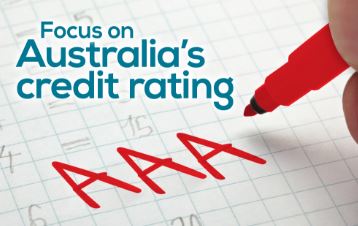2016 August Newsletter

The fear factor: getting out of your comfort zone

“Outside of the comfort zone is where the magic happens.”
Sound familiar? We’ve all heard the phrase before – in a book, on a motivational poster, in a meme, as part of an ad. It’s the ubiquitous, go-to idiom for motivating people to do things that, well, they don’t really want to do. But it’s used so often that it’s almost lost its meaning. So what does it really mean to ‘get out of your comfort zone’?
The psychology of the comfort zone
Psychologists, along with other scientists and academics, have been studying the phenomenon for over a century, usually in reference to performance management. In other words, what happens to your capacity to get things done when you’re pushed beyond what you’re used to.
A 1907 US study claimed that the anxiety (induced from going beyond what is familiar and easy) improves performance – up to a certain point.i Beyond that point – in the ‘danger zone’ – performance shoots back down. More recently, in 1991, Dr. Judith Bardwick wrote a comprehensive tome ii where she defined the parameters of the comfort zone; what’s ‘too comfortable’ and ‘too stressful’ for achieving anything worthwhile.
Why it’s good to push yourself
Outside the workplace, taking controlled and measured risks can help prepare you for unexpected life events, such as the loss of a loved one or a serious career hurdle. Repeatedly taking on small challenges builds your coping mechanisms, resilience, self-teaching skills, and other capabilities. The key is picking something small, where you know and can accept the boundaries of the risk. For example, try taking a different route to a destination you visit often. You’ll be forced to think of good alternatives, but you’ll still be able to budget for travel time and prepare for what could happen if you get lost or are late.
1. Every day, try one thing you’ve never done before – no matter how small.
2. Take an intro class in a new language. Language learning has proven benefits which extend to developing other skills.iii
3. Conquer your fear of public speaking and improve your skills by joining your local Toastmasters club.
4. Try a new restaurant or takeaway spot – without checking online reviews first.
5. Volunteer with a local not-for-profit. Choose an organisation where you’ll meet and work with people from a different walk of life.
6. If you usually get around by driving, try cycling/taking public transport, or vice versa.
7. When planning your next overseas holiday, choose a destination that doesn’t have much ‘tourist infrastructure’ – no big resorts, no coach tour options etc.
ii Danger in the Comfort Zone: From Boardroom to Mailroom--how to Break the Entitlement Habit That's Killing American Business (1995 edition).
iii http://www.theatlantic.com/health/archive/2014/10/more-languages-better-brain/381193/
Focus on Australia's credit rating
 Global ratings agencies Standard & Poor’s and Moody’s have effectively put the new Turnbull government on notice to reduce the nation’s budget deficit or risk a downgrade in Australia’s credit rating. Sounds serious, but what does it actually mean and is it necessarily a bad thing?
Global ratings agencies Standard & Poor’s and Moody’s have effectively put the new Turnbull government on notice to reduce the nation’s budget deficit or risk a downgrade in Australia’s credit rating. Sounds serious, but what does it actually mean and is it necessarily a bad thing? Standard and Poor’s has changed Australia’s credit outlook to ‘negative’ and says it will keep a close eye on Parliament and its efforts to narrow the budget deficit over the next six to 12 months before downgrading Australia’s AAA credit ratingi. Moody’s has adopted a less formal wait and see approach.
What is a AAA rating?
A AAA (or Triple-A) rating indicates to lenders that the government or institution so rated is highly likely to repay their loans. The three main global ratings agencies – S&P, Moody’s and Fitch – have similar grades, with AAA the highest and C the lowest. Anything below BB is considered ‘junk’.
Ratings are determined after looking at things such as assets, liabilities, income and expenditure. Like households, governments can improve their budget position by cutting spending and paying down debt. But unlike households, governments can also raise taxes and print money to boost their coffers.
Do ratings matter?
Australia’s debt is currently around 15 per cent of GDP. If we were to lose our AAA rating, the government would have to pay slightly higher rates of interest on bonds it issues in future. The higher our national debt, the more the government pays out in interest.
What does it mean for investors?
Like the government, the banks could also end up paying higher rates of interest to global bond investors who are a major source of bank funds. While this might be good for bond investors, an increase in the banks’ funding costs may not be so good for local borrowers who could end up paying more for their loans.
All eyes on interest rates
In this environment, most economists expect the Reserve Bank to cut interest rates to stimulate economic growth. In practice, it is the Reserve Bank that has the biggest influence on domestic interest rates, not ratings agencies.
The interest rate on Australian government bonds is currently around 2 per cent and falling, along with rates around the world. While low interest rates are bad news for savers and anyone who relies on income from their investments, there is a silver lining.
Low rates make it easier for the Australian government to pay down debt and lock in finance for investments that benefit the nation. While the warning of a credit downgrade focuses attention on the job ahead, it is unlikely to have a material impact.
Property: Rent, buy or invest?
 Buying a home has been heralded as the way to get ahead for generations of Australians. But with housing affordability a rising concern for would-be first home buyers and their parents, many younger Australians are beginning to weigh up whether it’s better to buy, rent or invest in residential property.
Buying a home has been heralded as the way to get ahead for generations of Australians. But with housing affordability a rising concern for would-be first home buyers and their parents, many younger Australians are beginning to weigh up whether it’s better to buy, rent or invest in residential property. Against this backdrop, it’s hardly surprising that the proportion of first home buyers has fallen to less than 14 per cent of all home buyers, the lowest level in more than a decade.ii
As the numbers of first home buyers fall, many younger Australians are focusing on buying an investment property instead. A recent survey by Mortgage Choice found 50.8 per cent of investors who purchased a first investment property were 34 or younger, up from just 33.8 per cent three years ago.iii
So which is best - buy, rent or invest?
Home sweet home
Unlike rents, which rise along with the cost of living, mortgage payments are fixed to the initial cost of the property and tend to fall relative to rents for similar properties over time.
Buying also provides the security of being your own landlord and the flexibility to renovate. After building up equity in your home you may choose to borrow against it to kick-start an investment portfolio.
On the downside, saving for a home deposit and transaction costs is a major hurdle for first timers. Ongoing costs for rates, maintenance and insurance can also be significant. While mortgage interest rates are currently at record lows, buyers also need to factor in the possibility of higher rates over the term of the loan.
When renting makes sense
Renting rather than buying can be a profitable strategy when other asset classes provide higher returns. Yet over the past 10 years residential property has been the best-performing asset class with an average annual return of 8 per cent a year compared with 5.5 per cent for Australian shares.iv
While this is no guarantee of future performance, it helps explain why many would-be first home buyers are taking a new approach to the old rent or buy equation.
The middle way
The advantage of this strategy is that your tenants help pay off the mortgage. And unlike a home you live in, costs such as mortgage interest, repairs, rates and insurance are tax deductible.
At the end of the day, the decision to buy, rent or invest will depend on your personal financial situation, the state of the housing and rental markets, the returns available on other investments and lifestyle. The important thing is to have a long-term housing strategy that won’t disadvantage you in later life.
If you or your children are weighing up whether to buy, rent or invest in property, give us a call to discuss the options in the context of your overall investment strategy.
iii Mortgage Choice, 2016 Investor Survey,17 June 2016
iv ASX Russell Investments 2016 Long-term Investing Report
Please note this information is of a general nature only and has been provided without taking account of your objectives, financial situation or needs. Because of this, we recommend you consider, with or without the assistance of a financial advisor, whether the information is appropriate in light of your particular needs and circumstances.
Copyright in the information contained in this site subsists under the Copyright Act 1968 (Cth) and, through international treaties, the laws of many other countries. It is owned by EFDB Pty Ltd unless otherwise stated. All rights reserved. You may download a single copy of this document and, where necessary for its use as a reference, make a single hard copy. Except as permitted under the Copyright Act 1968 (Cth) or other applicable laws, no part of this publication may be otherwise reproduced, adapted, performed in public or transmitted in any form by any process without the specific written consent of EFDB Pty Ltd.
EFDB Pty Ltd | Sydney CBD | Northern Beaches | ABN 64 112 871 922 | AFSL 311720
Categories
- Blogs (51)
- Budget (19)
- Community and Sponsorships (5)
- Cyber Security (3)
- Economic / Topical (36)
- End of Financial Year (8)
- Estate Planning (4)
- Foreign Exchange (1)
- Gifting (2)
- Health (16)
- Insurances (18)
- Investments (29)
- Lifestyle (41)
- Newsletters (55)
- Retirement (19)
- Share Buyback (1)
- Superannuation (27)
Recent Posts
Archives
- November 2022 (1)
- May 2022 (1)
- April 2022 (1)
- February 2022 (1)
- December 2021 (1)
- November 2021 (1)
- September 2021 (1)
- June 2021 (1)
- May 2021 (1)
- April 2021 (1)
- March 2021 (1)
- February 2021 (1)
- January 2021 (1)
- December 2020 (1)
- October 2020 (1)
- September 2020 (1)
- August 2020 (1)
- July 2020 (1)
- June 2020 (1)
- May 2020 (1)
